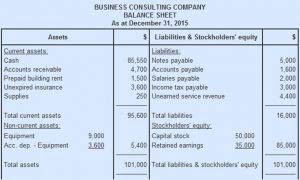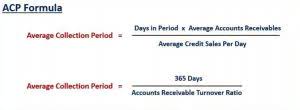
Because these expenses are discretionary, and the total spending across departments can add up to a substantial amount each month, some kind of tracking of meals and food is absolutely necessary. Revenues are where all the organization’s income enter into the organization’s accounting system. While we are defining assets, we need to straighten out another misconception on checking accounts in regards to how the debits and credits work. A normal balance debit transaction into a checkbook actually increases the balance of the checkbooks. In smaller churches, a single individual might handle both bookkeeping and accounting tasks. For larger churches, having dedicated professionals for each role is ideal.

Mission, Not Profits:
- Learn more about our integrations (you can connect with 2000+ applications and more!).
- If it is partway through the year, you will need to bring in all the revenue and expenses for the current year.
- Bookkeeping and accounting practices like fund accounting, monthly account reconciliation, and filing reports and statements with the IRS will help your church remain transparent.
- We’ll explore the unique intricacies of church accounting and offer practical guidance to help faith-based organizations navigate their financial journey.
- In this case, a COA is necessary to compile the necessary information and ensures that the reports are accurate.
- Effective financial management is critical to the long-term success and sustainability of a church or nonprofit organization.
- The Statement of Financial Position is a vital financial report for nonprofit organizations that offers a comprehensive view of their financial health at a specific point in time.
Proper documentation of any financial data helps you stay prepared for audits and will help you provide evidence of compliance with regulatory and tax guidelines. We also defined equity as fund balances, different than for-profit accounting and owner’s equity. Understanding this concept is very important because it drives the whole underlying structure of a nonprofit. A well-structured COA allows the church to accurately track and report on how funds are being used, which is critical for financial transparency and accountability. It can also aid in ensuring that funds are used in accordance with donor restrictions and in alignment with the church’s mission and goals.
Trusted worldwide by

Here are some quick examples of your church’s revenue sources and how you can track them. A robust church accounting method will clarify areas that sometimes feel chaotic. You can say goodbye to church chart of accounts the stress of keeping track of scattered tithing envelopes and being able to streamline the financial processes with accurate financial reporting. This will give you more time to focus on what truly matters- serving your congregation and community.
– Donor Trust
This statement enhances financial transparency, accountability, and informed decision-making, contributing to the organization’s overall financial management and mission fulfillment. Selecting the right church accounting software can be a significant asset to the financial management of religious organizations. By considering the listed factors, organizations can choose software that meets their specific needs and enables efficient and accurate accounting practices.

Structure your financial systems to wholly support your mission work and enhance the effectiveness of your organization. Another way to shape an elegant chart of accounts is to use account groupings or roll-up accounts to organize your line items. The common building blocks of an effective COA are locations, funds, and departments.
- In business accounting, conversely, the primary goal is profitability—tracking income and expenses to maximize profits.
- Fund accounting helps churches separate revenue and expenses based on how they came in and how they’re used.
- In this article, we’ll dive into the basics of church accounting and explore the many benefits of using church accounting software.
- We need to take a look at the net assets because this is typically called owner’s equity in most accounting software.
- You can do this by comparing donor activity to your financial documents.
- The overall administrative burden on their staff was drastically reduced.
- In the case of churches, they get the majority of their revenue through donations so donation revenue accounts appear first.
Smaller churches can get away with hiring a freelance accountant or working with a local company to file required tax forms and develop financial reports. They will also need a separate bookkeeper to keep track of funds throughout the year. Fund accounting requires bookkeepers to create different funds for separate revenue and expenses. This type of bookkeeping is too complicated to use an Excel file, so your church must purchase reliable accounting software to keep track.
- In church accounting, the focus is accountability (of course, having money left over at the end of the month is awesome, but that’s not the objective).
- The funds are responsible for breaking up each account such as assets, liabilities, revenues, and expenses.
- An important rule for church accounting is to delegate accounting responsibilities.
- It provides a snapshot of your financial performance, showing whether your church is operating at a surplus or deficit during that time.
- Setting up your church chart of accounts correctly is the mandatory first step toward accurate fund accounting.
- A COA is useful for all kinds and sizes of organizations across any industry — including churches.
- Our nonprofit professionals can help you structure your financial systems to wholly support your mission work and enhance the effectiveness of your organization.
Your equity account might be further broken down into sub-categories, such as net income and fund balances. You will likely further break down the latter into individual funds and assign each one its own name and number on your COA. Each of these will have its Bookstime own set of recorded transactions within the stated fiscal period. A chart of accounts is an important part of your church’s accounting activity.


